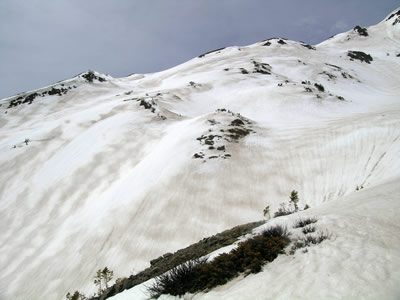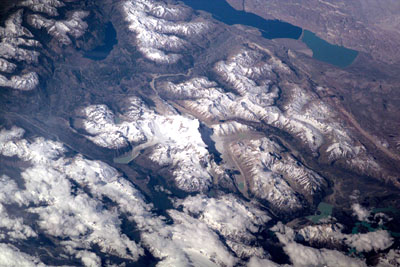Click on image for full size
Image Courtesy of the Center for Snow and Avalanche Studies
Dust-on-Snow: Spring Winds Can Bring More Snowmelt
Scientists are learning about how dust from wind storms is affecting the snow pack in Colorado. When the winds are right and the desert is dry, dust blows to the east from U.S. Southwest. When this happens, small dark particles of the dust fall on Colorado's pristine white snowfields.
"More than 80 percent of sunlight falling on fresh snow is reflected back to space," says Tom Painter, Director of the University of Utah's Snow Optics Laboratory. "But sprinkle some dark particles on the snow and that number drops dramatically."
"The darker dust absorbs sunlight, reducing the amount of reflected light and in turn warming the now 'dirty' snow surface," says scientist Chris Landry, Director of the Center for Snow and Avalanche Studies (CSAS) in Silverton, Colorado.
Although scientists knew from theory and modeling studies that this dust changed the amount of solar energy that is absorbed or reflected from the snowfields, which is called albedo, no one had made measurements of how it affects snowmelt rates. Then during the winter/spring of 2004, Painter and Landry began their project. They were the first to make measurements of dust-on-snow events along with collecting data about climate and hydrology.
Spring snowmelt from the Rocky Mountains provides much of the American West's water supplies. As a result of Painter's and Landry's research, water managers have learned more about the snowmelt process, and are using those findings to help the Colorado Dust-on-Snow (CODOS) program provide information.















